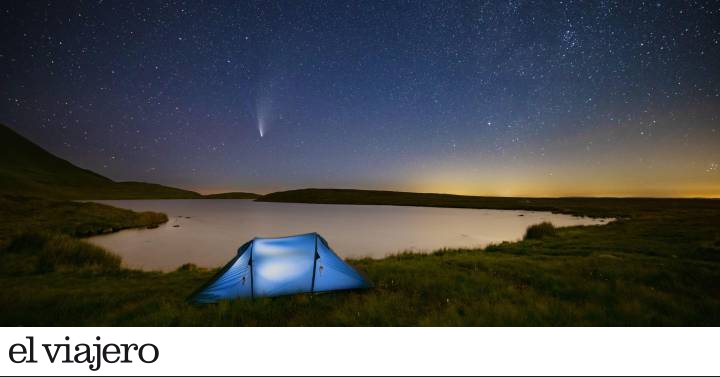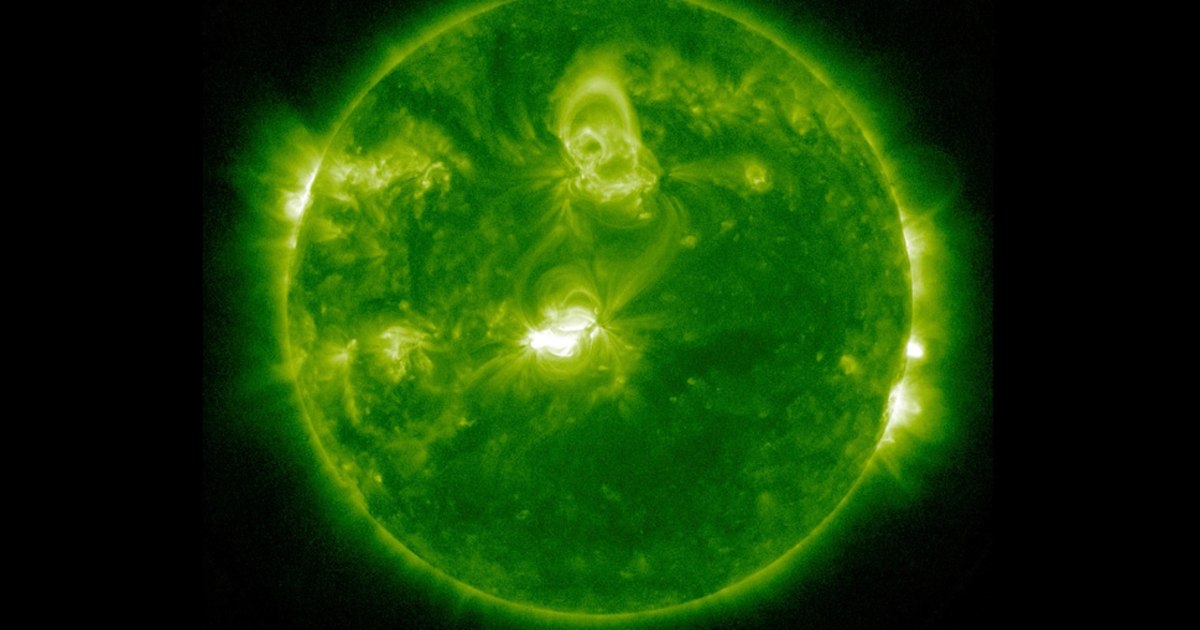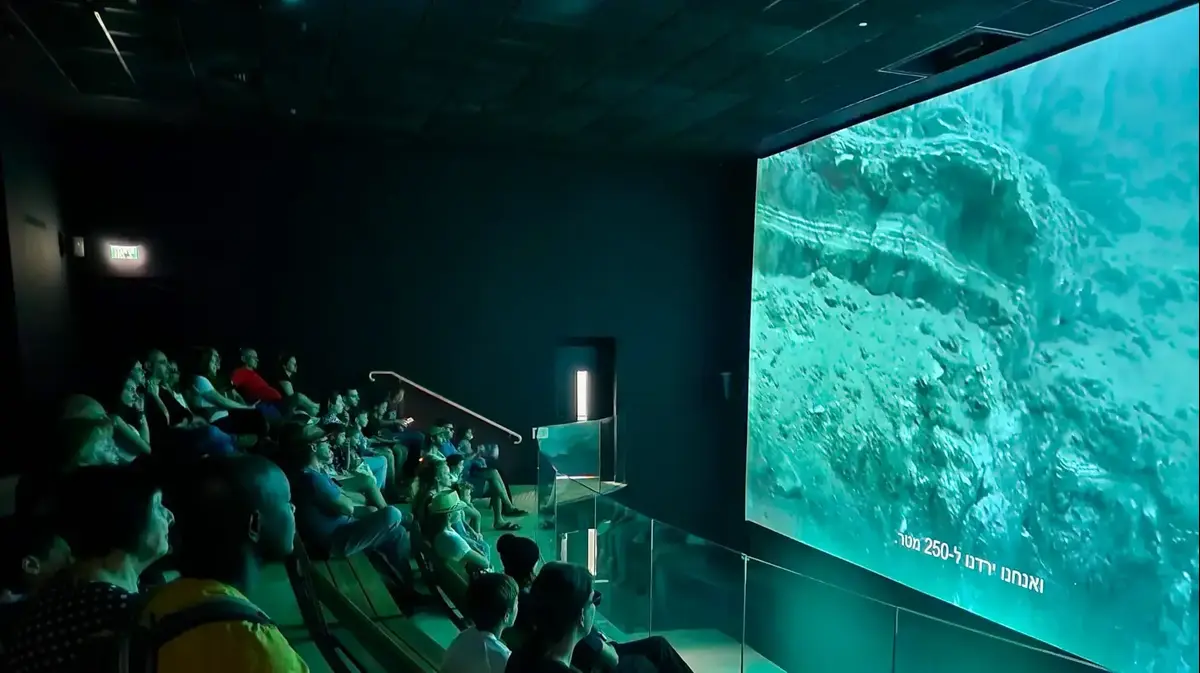1Observatorio del Teide (Tenerife, Spain): a postcard of the sky Astronomers have assumed for decades that there had to be celestial bodies larger than planets in the sky, but not large enough to release the energy required to shine like the Sun. Finally In 1995, the hypothesis was confirmed at the Teide Observatory, located on the homonymous peak in Tenerife, at 3,718 meters high. With the solar telescope, the researchers first sighted a brown dwarf star, today called Teide 1. On a guided tour of the observatory, this dwarf can be admired, which is actually quite large: between 20 and 50 times the size of Jupiter. As light pollution is increasing in the Canary Islands due to the growing population, now the observatory has specialized in the Sun.
More information: iac.es Czermak Photography getty images
2The Milky Way from Galloway Forest Park (Scotland) Anyone looking for the ideal location to film a fast-paced chase through dark forests, this is it. And whoever simply wants to look at the sky, should not miss this famous UK natural park. Since 2009, Galloway has been considered a Dark Sky Park, a status that protects it from light pollution. Until last June, at the Scottish Dark Sky Observatory you could admire the starry sky with the telescope of its dome, five meters high. But a fire has destroyed its facilities. Although the truth is that at first glance it is shocking. In the photo, the Milky Way seen from Galloway Forest Park.
More information: forestryandland.gov.scot Simon Robertson getty images
3Brecon Beacons National Park, Wales, safe from light pollution One of the three Welsh National Parks, the Brecon Beacons await the perfect astronomical holiday with fun outdoor activities.
This protected area in South Wales offers by day the opportunity to go walking, mountain biking, horse riding, climbing, hang gliding and canoeing.
When darkness covers mountains, streams, and swamps, entertainment comes from heaven.
Like Dark Sky Reserve, the park is protected from light pollution.
If there are meteor showers or other galactic phenomena, telescopes are mounted.
From September 24 to 26, the Dark Sky Festival 2021 will be organized, which will also have online activities.
More information: breconbeacons.org Matt Gibson getty images
4The stars reflected in the water, in the Kerry International Dark Sky Reserve (Ireland) In the southwest of Ireland is County Kerry, an idyllic coastal region dotted with coves, islands, green hills ... and not much else. But that is precisely where its charm lies. This Dark Sky Reserve is one of four in the world with gold status, and the only one of them located in the Northern Hemisphere (a distinction awarded by the International Dark-Sky Association, whose objective is to protect the darkness and combat the Light pollution). Seeing the stars of the sky reflected on the waters of the many beaches in the area is one of the most impressive experiences that can be had in this corner of Ireland.
More information: kerrydarkskytourism.com David Cotter getty images
5 Tears of Saint Lawrence in Rovinj (Croatia) In the year 258 Saint Lawrence, as administrator of the Church's assets, was required to hand over the treasure to the Roman Emperor.
Instead, he presented her with the “true treasure of the Church”: a group of the poor, the sick, the widows, and the orphans.
So they executed it.
Legend has it that, on the day of his death, his tears continue to fall: a shower of shooting stars that is admired by the whole world every year in the middle of August.
This year the Perseids will be visible until the 24th, although their peak will occur on the nights of August 11-14.
In the Croatian town of Rovinj, the night of St. Lawrence is especially celebrated, when the entire city turns off its lights to better appreciate the stream of meteors.
More information: croatia.hr Nino Marcutti alamy
6Night luminescence in Sternenpark Westhavelland (Germany) The Earth is surrounded by a sheath that glows sometimes in lilac, sometimes in green. It is the oxygen atoms in the atmosphere that cause this nocturnal luminescence. Here, in one of the darkest places in Germany, such a phenomenon can be admired on moonless nights. The Sternenpark Westhavelland, in the state of Brandenburg, offers cozy rental apartments with sea views, with sun loungers from which everyday life seems at least as far away as the Milky Way.
More information: sternenpark-westhavelland.de Agencja Fotograficzna Caro alamy
7Hunting the Northern Lights in Iceland To the Vikings, the Northern Lights were reflections of the armor of the Valkyries. Then science stripped this phenomenon of its magical character, but not of its fascination. In Iceland many nights shine between September and April, as long as the moon and artificial lights do not obstruct the darkness too much and there are no clouds. The Icelandic weather agency even offers a forecast of your visibility. In the image, the aurora borealis over the Breiðamerkurjökull glacier, located in the southeast of the country. Arctic-Images getty images
8More Northern Lights in Northern Lapland (Finland) Santa Claus could hardly have found a more beautiful and idyllic corner for his gift workshop. Between November and March, northern Lapland dozes peacefully under a thick layer of snow. Many nights, the northern lights blaze overhead. It produces green-yellow, red and purple iridescence on the canvas of the sky, full of stars. It is best to reserve an igloo with a glass roof. In the photo, the northern lights over a forest in Nellim, in Finnish Lapland.
More information: visitfinland.com Thomas Niedermueller getty images
9Sternenweg Grossmugl (Austria) - A night sky for everyone Observing a starry sky over big cities? It is complicated. The town of Grossmugl (Austria), located about 40 kilometers north of Vienna, wanted to give access to the night sky also to the inhabitants of the metropolis blinded by artificial light. Thus, in 2014 it opened an astronomical thematic path. The road stretches for a kilometer and a half and has informational signs that bring the fascination of the sky to Earth. Today this small town of 1,500 souls is called Großmugl of the Milky Way.
More information: project-nightflight.net image by project-nightflight.net
10Night walks in the Hohe Tauern National Park (Austria) Whoever wants to see Virgo, Cassiopeia or Taurus in Europe, better go up to the mountains. In the Alps, certain ski areas have taken advantage of their darkness: in the Schareck Alpine resort in the Austrian Hohe Tauern National Park, there are four telescopes available to visitors from which to see the planets clearly. The Großglocknerhaus hostel in Heiligenblut even offers night walks. A protected natural area in which Mount Grossglockner is also located, which at 3,798 meters is the second highest mountain in the country.
More information: austria.info Alberto Perer alamy
11A spectacular viewpoint on the island of Lípari (Italy) Belvedere Quattrocchi (four eyes, in Spanish) is the most famous viewpoint in Lípari, the largest island in the Aeolian archipelago, located north of Sicily. At least as many eyes are needed to take in the spectacular view. If it is worth it during the day, at night the Milky Way illuminates the picturesque cliffs and the turquoise sea. Always, of course, that the two nearby active volcanoes sleep peacefully and without smoke.
More information: visitsicily.info Marco Crupi getty images
12Skinakas Observatory in Crete (Greece), under the blessing of Zeus In central Crete, at the foot of Mount Psiloritis, at 2,500 meters high, a restless mother brought her son into the world in a dark grotto. According to the myth, it seems that he wanted to protect his little one from being killed by his father, obsessed with power. So little Zeus grew up in the custody of the nymphs. Today it is this deity who watches over the sky that, from this observatory at 1,760 meters, it especially imposes. In summer it is common for visitors to use the telescopes as well.
More information: skinakas.physics.uoc.gr getty images
13Starlight Room, a glazed wooden sled in the Dolomites (Italy) A truly alternative design haven: the Starlight Room is a kind of heated wooden sled with a glass roof at 2,055 meters high on the peaks of the Dolomites. That is to say, from the bed one can admire the spectacular phenomenon of enrosadira, at which time when the sun sets, the star floods the peaks of these mountains in a fiery red. At night, the Milky Way stretches out over the cozy glass cabins. In the photo, a starry night in the Three Peaks of Lavaredo, a Unesco heritage site in the Italian Dolomites. Doctor J. Getty Images
14Zodiacal light from the Zselic Starry Sky Park (Hungary) Currently, in Europe darkness is protected from artificial lights in a total of 19 Dark Sky Parks, protected natural areas that guarantee the vision of the stars in the best possible conditions. In the Zselic Starry Sky Park, a protected area since 2009 and located in southern Hungary, the Milky Way and the zodiacal light can already be admired with the naked eye on clear nights. For everyone who wants to see deeper into the sky, there are also telescopes in an observatory (in the image).
More information: zselicicsillagpark.hu Istvan Csak alamy
15A walk through the galaxy at the Euro Space Center (Transinne, Belgium) Explore the wonders of the galaxy as a family. That is what the Euro Space Center complex proposes, about 130 kilometers south of Brussels. There, visitors will recreate the Apollo 11 flight to the Moon or admire the Milky Way and the Andromeda nebula in the planetarium. The walks on Mars or the Moon are essential, in which gravitation and the environment try to emulate themselves with the help of augmented reality glasses. No need to worry about the temperature: it continues as on Earth.
More information: eurospacecenter.be Arterra / Universal Images Group getty images
16Vaduz planetary path (Liechtenstein) Between the Sun and Neptune there are about four and a half billion kilometers. The planetary path of Vaduz (Planetenweg) reduces them to five passable kilometers arranged in a perhaps non-cosmic way, but more or less rectilinear. Between Earth and Mars there is nothing but a pleasant walk along the Rhine with views of the Swiss Alps. And another advantage has this planetary path compared to a true sidereal journey: on the way there are benches and tables for picnics and from which you can admire the beauty of our planet. In the image, view of the Moon from Vaduz.
More information: tourismus.li Martin Gstoehl getty images
17Dark Sky Alqueva (Portugal): the galaxies in our hands The Alentejo, in the south of Portugal, offers many attractions during the day: dreamy beaches, ideal waves for surfing, spectacular cliffs and approximately 300 sunny days a year. And at night? Well, it is clear: after tasting the green wine of the region, the sky serves as a planetarium and offers an incredible view of the Milky Way and several galaxies around the Alqueva reservoir, declared Dark Sky and certified as a Starlight tourist destination. In the image, a telescope on the terrace of the Herdade dos Delgados Dark Sky View & Spa Hotel, in Mourão, in the middle of the Dark Sky Alqueva Reserve.
More information: darkskyalqueva.com Horacio Villalobos getty images
18Pic du Midi (France): a dazzling firmament From this summit at 2,877 meters high, on clear days the 300 kilometers of the Pyrenees and large parts of France are dominated. Then, when night falls, the visitors to the observatory have a dazzling sky above their heads that, due to the low atmospheric pressure, glows even more clearly. This place is home to an impressive planetarium and the largest reflector telescope in France.
More information: picdumidi.com Sergi Boixader alamy
A journey through the night skies
2021-08-12T02:49:53.287Z

In the week of the Perseids or Tears of San Lorenzo, we propose 18 points of perfect darkness to practice astronomical tourism and marvel at the sky. From the northern lights of the Arctic to the brightest skies of the Atlantic, and from observatories on alpine peaks to those on Mediterranean islands














